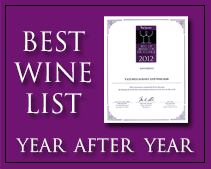Five things you didn’t know about Tequila
Date: 19th October, 2010
Manila Restaurant and Wine Bar discusses Tequila and Rum
Tequila has a bad reputation and it’s because we’ve all been there, lured by its ritualistic methods of consumption and its promise to take us to a higher level of consciousness, but in the end we’re left with a vague recollection of the night’s proceedings, wondering who’s in the bed beside us, cotton-mouthed and crusty-eyed. Some might blame all that on the volume of tequila ingested, others might point to the sugar-based ingredients tequila is sometimes mixed with (then called mixto), and yet it likely has something to do with the quality of the tequila (inferior tequilas often add sugar and caramel). Our typical college or tavern experience with tequila contradicts one of Danny Schneeweiss’ (cofounder of Milagro tequila) guiding principles in life, which is: “tequila shouldn’t be painful.” When you drink premium brands like Milagro, which is made from 100% agave, insanity shouldn’t follow and hangovers will be a thing of the past.
If you’re in the market to buy some tequila (and why wouldn’t you be, since 90% of tequila sales are made in Mexico and the U.S.), there’s basically one thing you want to look for on the bottle, and that’s “100% de agave.” This means is that all the alcohol contained within the bottle is a direct result of the fermentation of the agave and only the agave; no sugar or other additives have been included to supplement the creation of the alcohol. In the end, this results in better tasting tequila and hopefully no hangovers.
Tequila is the heart and soul of Mexico. It’s the national drink and it has been unfairly branded throughout history — even after the conquistadors introduced distillation to mezcal in 1530. Bet you didn’t know that or these other five things you didn’t know about tequila.
1- Tequila is aged in the plant, not the cask
Most of us know that spirits like whisky and wines are aged in oak barrels, which typically enhance their flavors and smooths out their edge. There’s usually a point of perfection, but there’s often a certain amount of prestige associated with older spirits, and with that prestige comes a higher price point. Unlike these fruit- or grain-based beverages, tequila is derived from the blue agave plant (not a cactus as many believe), which is a member of the lily and amaryllis family of flowering plants. While some tequila, such as Milagro’s reposado and anejo is aged in barrels (unlike the brand’s silver line, which is not), the time to maturation is short; allowing tequila to age longer than four years could deteriorate the quality of the spirit. Nonetheless, blanco is bottled directly after distillation, resposado (rested) must be aged a minimum of two months by law (Milagro, however, ages theirs for six months), and anejo (old) is aged a minimum of 12 months by law (and, again, Milagro, ages theirs for 18 months).
The blue agave plant takes 8 to 12 years to mature, at which time the heart, called the pina because it resembles a pineapple, is harvested. The harvested pina typically weighs 50 kilos and will produce one case (12 bottles) of tequila. Timing is crucial when harvesting the blue agave, which is why it’s said that the aging is done in the plant. After waiting 8 to 12 years for the plant to mature, you know you’re getting close when the leaves are between five and eight feet tall, the plant’s diameter is 7 to 12 feet and the quiote (stem) shoots up from the center of the plant. As soon as the quiote shoots up, it’s removed (and harvesting isn’t far behind) because it will reduce the amount of sugar in the pina, which would make it unusable for the tequila-making process.
2- Tequila is like champagne
Like champagne, tequila has Denomination of Origin, meaning that the spirit can only be produced in Mexico — and that’s usually done in the Jalisco state. If you think tequila is only a step above moonshine production in a broken-down shack, consider that it is among the most closely and regulated spirits in the world, watched by the Mexican government, the Tequila Regulatory Council and the National Chamber of Tequila Producers. While individual distilleries decide upon their own techniques or what they consider quality, other specifics like aging requirements down to what’s printed on the bottle are closely regulated. Yes, tequila got its start in the Jalisco state and a local town even gave its name to the spirit, but what about the region makes it deserving of being awarded with Denomination of Origin? First, tequila must be made with blue agave (agave tequilana). Second, the volcanic soil and climate in Jalisco is especially conducive to growing the plant. The region is further subdivided into two regions, the lowlands and the highlands, which has an affect on the profile of the final product. As Danny from Milagro puts it, “The highlands of Jalisco… provide a microclimate that provides an agave of extremely good quality, that provides tequila with a very distinctive profile; it’s very smooth, it goes down very, very smooth and it’s a fresh, clean, crisp taste.”
3- Tequila once required human sacrifice or blood
While archeologists state that agave has been cultivated for roughly 9,000 years, the Aztecs didn’t discover pulque (tequila’s modest predecessor) until about 1,000 years ago. Legend has it that the Aztecs discovered pulque after lightening struck an agave plant and cooked the insides and caused the juice to seep out. Sweet and mildly alcoholic, the Aztecs believed the drink to be a gift from the gods, one that opened communication between mortal and immortal (we know a few people who still feel this way whenever they consume an alcoholic beverage). Typically reserved for priests, nobility and the sick, pulque was used in religious rituals that often required human sacrifices to ensure a plentiful supply so that, you know, the Aztecs could keep talking to the gods.
At a later date in Mexico’s history, during the Mexican War of Independence, another ancestor of tequila was brought into battle and used to toast the revolution. So, yeah, there’s more blood spilled — and don’t even count all the bar fights because some drunk did body shots off another drunk’s drunken girlfriend.
4- Tequila goes bad
In our first point, we said that barrel-aging tequila for more than four years would deteriorate the quality of the tequila. By that, we mean that tequila loses some of its agave qualities and takes on more of the bourbon qualities from the cask in which it’s aged. So, actually, it doesn’t go bad, but you end up with something closer to whisky than tequila.
To help you out at home, you should know that once you open a bottle of tequila, you better be in the mood to drink it. Generally, you have one to two months before oxidization and evaporation diminish the quality of the tequila and destroys the agave profile.
5- Tequila is technically a mezcal
A lot of people confuse mezcal and tequila. And a lot of people who think they know a little something will say that tequila isn’t mezcal. They’re wrong. However, mezcal can never be tequila. Confused? Think of mezcal as whisky and tequila as Scotch, which is a whisky but “better.” And, as alluded to above, pulque came before mezcal. The primary difference between tequila and mezcal, however, is the plant. All tequila must be produced using blue agave, while a variety of agave plants can be used to make a single mezcal batch. Also, mezcal can be produced in multiple Mexican states.
Are these articles useful for enhancing your wine and dine experience in Manila and other cities like Pampanga Angles City, Subic and Clark Philippines. Do they also help you with travel, leisure, vacation, dining out, nightlife and other leisure activities plans in Philippines? Yats Restaurant hopes to supply you with plenty of information to plan out your trips from Manila to Pampanga Angeles City Clark Freeport Zone whether you are travelling from Manila or other Asian countries such as Hong Kong, Shanghai, Singapore, Malaysia or Korea.
Philippines Restaurant reservations in Manila, Subic, Pampanga Angles City or Clark Freeport Zone, planning of menu, selection of wine for dinner and booking a private function and nightlife and event in Angeles City Clark Freeport Zone can all be handled. Yats Restaurant and Wine Bar has been regarded by many to be the premier restaurant north of Manila Philippines. Its 3000-line award-winning restaurant wine list has kept many wine lovers happy dining in this restaurant in Pampanga Clark Philippines for over a decade.
Yats Restaurant and Wine Bar was built by Hong Kong-based Yats International in 2000 to provide a world-class fine dining restaurant, business meeting facilities and venues for private dinners and functions in Pampanga Angeles City Clark Freeport Zone. Pampanga Angeles City Clark Philippines was selected for this restaurant because of safety, clean air, absence of traffic and proximity to Manila and Subic.
For comments, inquiries and reservations, email Restaurant@Yats-International.com or call these numbers:
(045) 599-5600 0922-870-5178 0917-520-4401 ask for Ernest or Pedro.
Http://www.YatsRestaurant.com
Getting to this fine dining restaurant of Angeles City Clark Freeport Zone Pampanga Philippines
How to get to this fine-dining restaurant in Clark Philippines? Once you get to Clark Freeport, go straight until you hit Mimosa. After you enter Mimosa, stay on the left on Mimosa Drive, go past the Holiday Inn and Yats Restaurant (green top, independent 1-storey structure) is on your left. Just past the Yats Restaurant is the London Pub.
Source: http://www.askmen.com/entertainment/special_feature_400/402b_tequila-5-things-you-didnt-know.html











